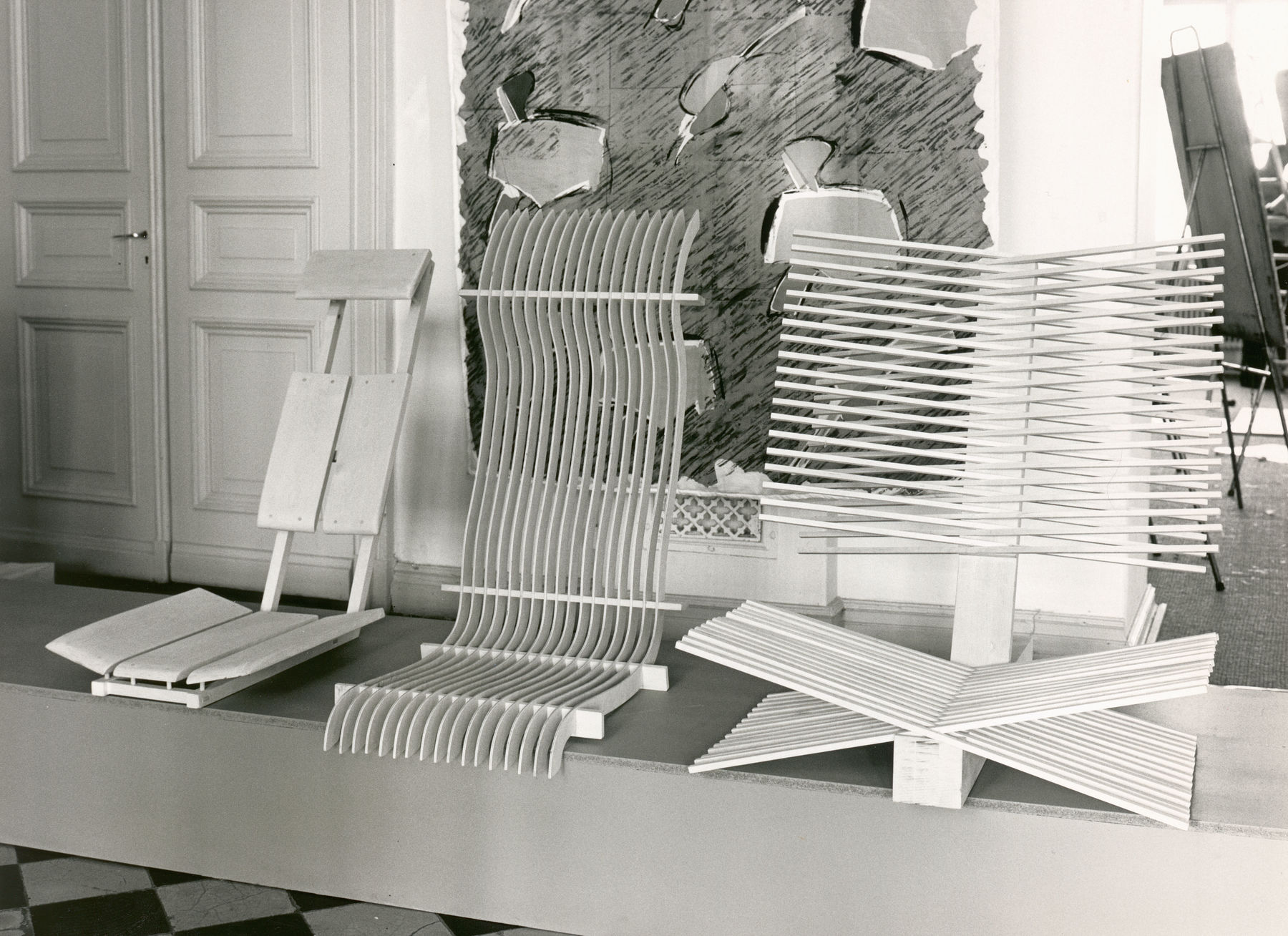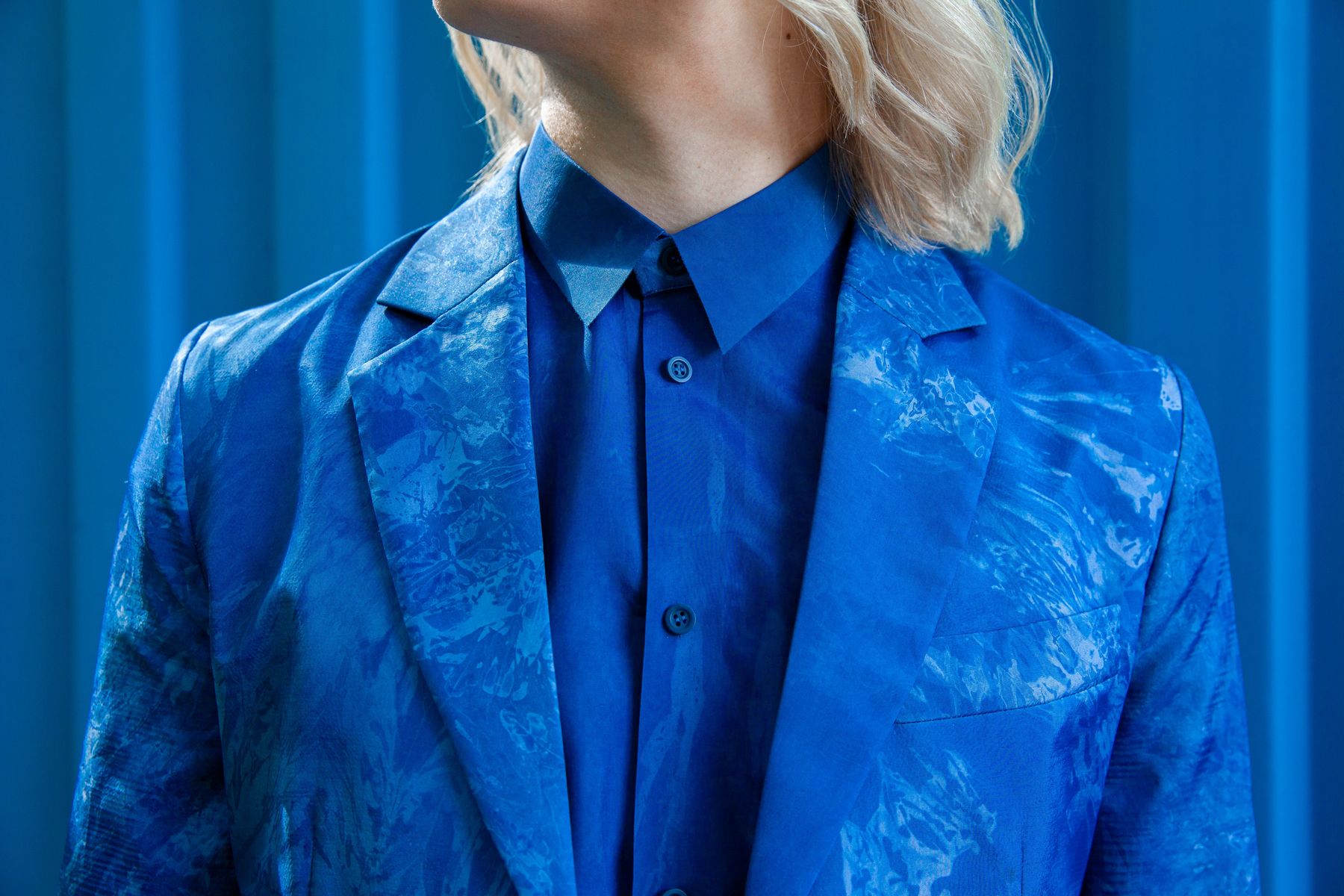REDEFINING THE FUNDAMENTALS OF DESIGN:
FROM FINNISH INTERIORS TO NEW MATERIALS

The Milan miracle in 195 placed Finnish design among the world's best
The miracle didn't happen out of the blue. It was built by the alumni of the Institute of Industrial Art.
The breakthrough of Finnish design almost didn’t happen. Finland had been invited to the IXth Milan Triennial in 1951, the most important craft and design exhibition of its time, but funding was a problem. In a country recovering from war, the state, the business sector and the designers themselves were hesitant to participate in an event that might not prove useful.
The first test awaiting Tapio Wirkkala, who was the Commissioner of the Finnish Department and would soon be appointed the Art Director of the Institute of Industrial Art, was to unite the field and scrape together the necessary resources. The small exhibition team took off on short notice.
On show at the Palazzo dell’Arte in Milan were mainly works of Finnish crafts and design: unique glassware and ceramics by Wirkkala, Rut Bryk and Toini Muona, and textile art by Alli Koroma and Dora Jung. Industrial production was represented by Alvar Aalto's stools, Ilmari Tapiovaara's Domus chairs and Lisa Johansson-Pape's lamps.
Despite the humble beginnings, the exhibition turned out to be an unprecedented success. The Finnish team brought home six Grand Prix prizes, six gold medals, seven silver medals, and three honourable mentions. The international press went crazy, and the American magazine House Beautiful picked Wirkkala's laminated wood platter as the most beautiful object in the world.
The success was fully taken advantage of, both in Finland and abroad. At home, people recovering from war and from postwar scarcity hungered for heroes and got Wirkkala, Timo Sarpaneva and Kaj Franck.
‘The success catapulted design into the national consciousness and boosted our confidence. We understood that this here is exactly what we excel at,’ says Yrjö Sotamaa, long-time president of the University of Art and Design Helsinki.
The success linked Finnish Design to Scandinavian Design. It played a big part in the Finnish Cold War foreign policy, with Finland wanting to appear as part of the Western Bloc.
From a successful contestant to a top-ranking player
Although the triumph at the 1951 Triennal was named the Milan miracle, it didn’t come out of the blue.
The Institute of Industrial Art nurtured students’ intuitive thinking and artistry. The pedagogical approach of the two Art Directors, Arttu Brummer and Tapio Wirkkala, bore fruit, with all but one of the prize winners at the 1951 Triennal being institute alumni.
Design began to change in the 1960s. The cult of design heroes was subjected to criticism and, as social awareness increased, people started to see design more broadly than just as objects participating in a beauty contest. Now, exhibitions and contests have lost their earlier significance as the measures of good taste. Instead, Sotamaa emphasises the success of the Aalto University in global ratings.
‘It's a big deal to have achieved such a prestigious position in developing global design expertise. It can be considered the big triumph of our time. It's based on the patient and systematic work we have done since the 1950s,’ he says.
Text by Miisa Pulkkinen

Kirsi Niinimäki: ‘We are at the forefront of change”
Associate Professor in Design Kirsi Niinimäki is tackling a planetary challenge: the textile industry must be transformed into a sustainable, balanced system. The change has to happen both in closets and at European Union conference tables.
In 2020, an international research group headed by Professor Kirsi Niinimäki published startling figures. Textile production generates ten percent of global CO2 emissions. It uses four percent of global freshwater resources and 16 percent of all pesticides, and 35 percent of microplastics in the oceans come from the textile industry.
The article, published in the distinguished journal Nature Reviews, made news around the world and especially in the UK, whose residents are the largest consumers of fast fashion in Europe. It sparked a debate on the climate impact of fashion and the textile industry and how to reverse negative trends.
‘We shouldn’t just look at the environmental impact but also investigate how to bring a better balance to the system,” says Niinimäki, who heads the Fashion/Textiles Futures research group at Aalto University’s Department of Design and serves as the deputy principal investigator of the multidisciplinary FINIX consortium.
Alternative futures
FINIX is developing a textile production and consumption system for Finland and aims to promote sustainable development globally. The change will have to happen on three levels.
On the micro level, there’s a need to develop new materials and the technologies to recycle them. Life cycle management requires traceability, for example through a code affixed to a garment that provides information about its supply chain. On the strategic level, the focus is on developing business and design strategies and new system understanding. Research topics include, for example, the system needed to recycle fibres. The third level deals with the social and political dimensions. For example, Niinimäki has been involved in the development of the European Green Deal programme and the Ecodesign Directive.
Design approaches can open new paths and show alternative futures when tackling an issue as momentous issue as climate change. Professor Julia Lohmann’s seaweed installations prompted discussion of marine protection at the World Economic Forum in Davos and the Museum of Modern Art in New York. Design is also present at the multidisciplinary Aalto University Bioinnovation Centre, which aims to accelerate the transition to a circular and bioeconomy.
FINIX designers have created prototypes of future garments by combining data from research partners and materials from business partners. ‘We create sustainability trends. We are in the forefront of change, which the business sector also values,’ says Niinimäki.
Systemic change progresses when consumers make sustainable changes. Niinimäki explains that change will jump forward as more textile waste recycling technologies are developed in Finland, but progress has to happen on several parallel trajectories. ‘We're on a verge of a great transformation – not just in value systems but also in industrial practices. We want to be involved in creating and supporting this transformation.’
Text by Miisa Pulkkinen